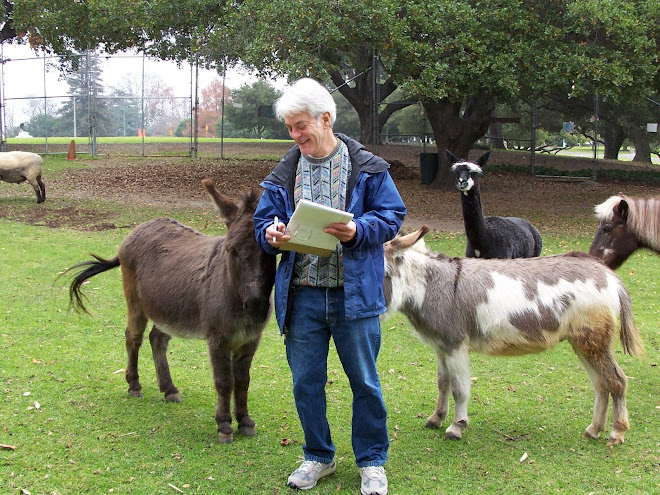(Above: Lawson Sakai in 1944, just before he shipped out, and in 2011, when he and the other surviving veterans of the 442nd RCT were invited to Washington, D.C. to receive a Congressional Gold Medal.)
On the morning of Sunday, Dec. 7,
1941, 18-year-old Lawson Sakai was listening to a pro football game on the
radio in the family kitchen.
Suddenly, a breathless announcer interrupted
the broadcast and said, "The Japanese have attacked the American base at Pearl
Harbor, Hawaii!"
The next morning, Lawson and four
of his friends marched down to the Army recruiting office to sign up.
They were accepted, but he was
turned away. Why? Because they were white and he was Japanese-American.
He asked for an explanation and
discovered that his draft classification had been changed from 1-A to 4-C,
"enemy alien," even though he was born and raised in the USA.
There was worse to come. A few
weeks later, all the Japanese-Americans on the west coast were arrested and
sent to detention camps that were stuck out in the middle of nowhere, where it
was broiling hot in summer, freezing cold in winter, and dirty, dusty and
depressing all year round.
The camps were surrounded by barbed
wire, and there were guards with machine guns on the watchtowers, ready to
shoot anyone who tried to escape.
And for what? There was not even
one incident of Japanese-American espionage or sabotage throughout the war. The
whole thing was racist, mean-spirited and cruel.
So what was Lawson's response? He
volunteered again to fight for the country that was doing this to him and his family.
Talk about returning good for evil!
And he was turned down again. So he
tried the Navy. They said no, too.
Finally, in 1943, the Army was so
desperate for manpower, it was willing to take anyone, even Japanese-Americans.
(But in a segregated unit, of course.)
Thousands of Japanese-American boys
volunteered, including future U.S. Senator Daniel Inouye, and the 442nd
Regimental Combat Team was formed.
Were they good soldiers? No. They
were the best soldiers America has ever had, and the numbers bear that out.
They were awarded more medals, man for man, than any other military unit in
American history.
"They were superb!” said
General George Marshall, Chief of Staff of the Army. "They showed rare
courage and tremendous fighting spirit. Everybody wanted them."
They were called the "Purple
Heart Battalion" because they suffered so many casualties - 9,486 in all.
Lawson was awarded four of those
Purple Hearts – technically, a Purple Heart with three Oak Leaf Clusters - and
he would have been awarded a fifth if he hadn't refused because he didn't think
his wound was serious enough. (He also received a Bronze Star and the Combat
Infantryman's Badge.)
On October 27, 1944 – 70 years ago
next Monday - he was on patrol in the Vosges Mountains when he suddenly found
himself face-to-face with a German soldier.
They both fired their rifles
simultaneously. The German missed. Lawson did not.
Hours later, after the battle, he
looked at the calendar and realized that it was his 21st birthday. More
importantly, it was also the day he didn't die.
Remember the end of "Saving
Private Ryan," when the dying Captain Miller says to Private Ryan, "Earn
this?"
Lawson Sakai has spent the last 70
years earning the sacrifice of his brothers-in-arms who never come back. He has
been an exemplary husband, father, businessman, veteran and, speaking
personally, friend.
Happy 91st birthday,
Lawson. And happy anniversary, too.

















